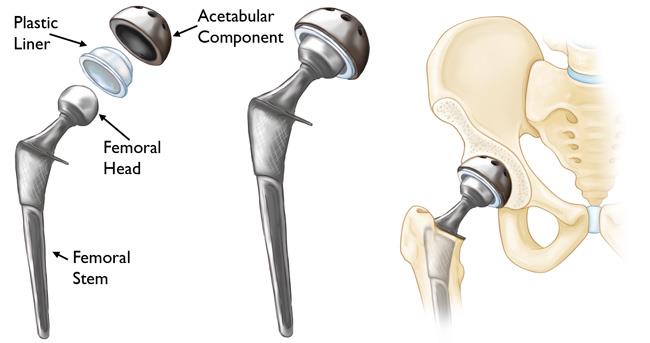Osteoarthritis is known to be one of the most common diseases that leads to chronic pain and disability. It is also known as wear-and-tear arthritis, and it can affect pretty much any joint in the body. While its occurrence is related to the joints getting worn out over the years, and the patients are usually over 50 years old, it can rarely develop in patients that are under 50 years old as well.
The anatomy behind the disease
One of the most common places that a person can develop osteoarthritis is the hip, which is why hip arthritis surgery in Melbourne tends to be the most common one. The reason behind that is that the hip joint is one of the largest joints. It is made out of the acetabulum and the end part of the femur that are also known as the socket and the ball.
Usually, the ball and the socket are covered with articular cartilage that ensures that the movement is smooth, slippery, and without any tearing between the bones that make the joint. However, over the years, the surface that ensures there is no tearing, the synovium, wears out over the years, and the lubrication lowers to the point where barely any of it is created.
Once the disease progresses far enough due to the lack of synovial fluid produced by the synovium, inflammations begin to develop, which is when arthritis symptoms are first usually noticed. In the beginning, the pain is tolerable, but as the disease progresses, even walking can be quite a painful activity.

What causes this to happen?
There is no specific cause behind the development of osteoarthritis, but aging, family history, previous injury, obesity, and improper formation of the hip joint at birth are all factors that increase the risk of this disease to happen. Sometimes, even if you do not have any of these increased risks, you can still develop the disease.
What are the symptoms?
According to an orthopedic specialist in Melbourne, the most common symptoms usually depend on the type of osteoarthritis. In hip arthritis, the pain is the most common symptom, and it can be experienced as a pain in your groin or thigh which expands to your buttocks or knee. Pain often flares up during some kind of physical activity that involves the join, and sometimes grinding noise can be heard due to the loose fragments of the cartilage that was destroyed.
What should you do if you think you have hip arthritis?
The first thing you should do is visit your doctor to get an examination. An examination usually has only two different parts. The first one is the physical examination, where the doctor will check for tenderness around the hip, range of motion, crepitus in the movement, pain when pressure is applied, problems when you walk, and other signs of injury to the muscles, ligaments, or joints.
After a physical examination, if there is a suspicion of arthritis, you will be sent to get some X-rays of your hip joint. On these x-rays, the doctor will be able to see any narrowing of the joint space, changes in the bone, and if there is a formation of bone spurs which are also known as osteophytes.
What is the treatment?
There are two ways that the treatment can go, which are non-surgical, and surgical way. Usually, the surgical treatment can wait, and non-surgical treatment is given to patients in the early stages of the disease. Some of the non-surgical methods of treatment are simple lifestyle changes, physical therapy, assistive devices, and medications.
When it comes to surgical treatment, is usually given to patients who cannot handle the pain with non-surgical methods, and the way arthritis is treated surgically is by replacing the original hip joint with an artificial one. It is quite a common procedure, as the surgeon will remove what remains of your original joint ad replace it with a prosthetic one.
Like any surgery, there is a potential for some complications, but since it is such a common procedure, it is quite rare that there is a development of infection, blood clots, or damage to the blood vessels, especially if performed by an experienced surgeon.

Final word
If you happen to go through a surgical procedure where your hip is replaced with an artificial one, you will have to go through some kind of recovery. During recovery, you will have to listen to everything the doctor says, from having a straight diet to doing certain exercises, and if you do, you will find yourself in the position where your new artificial joint might even be better than the original one.
You may be interested in: How ergonomic seat cushions relieve hip, leg and lumbar pain

